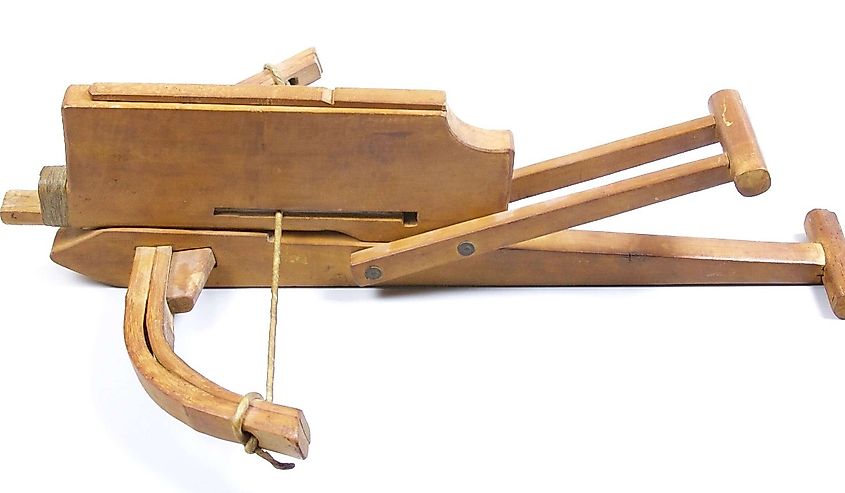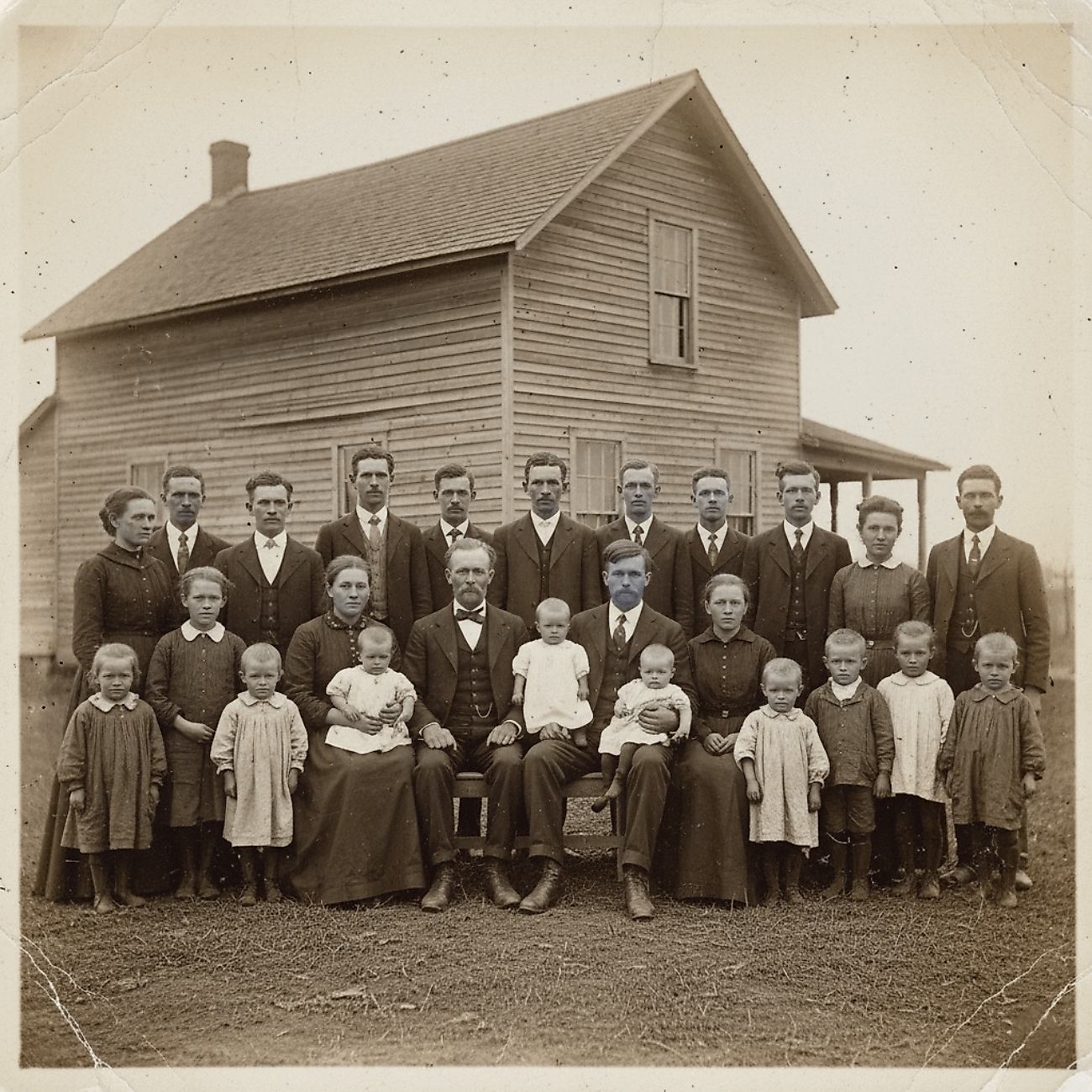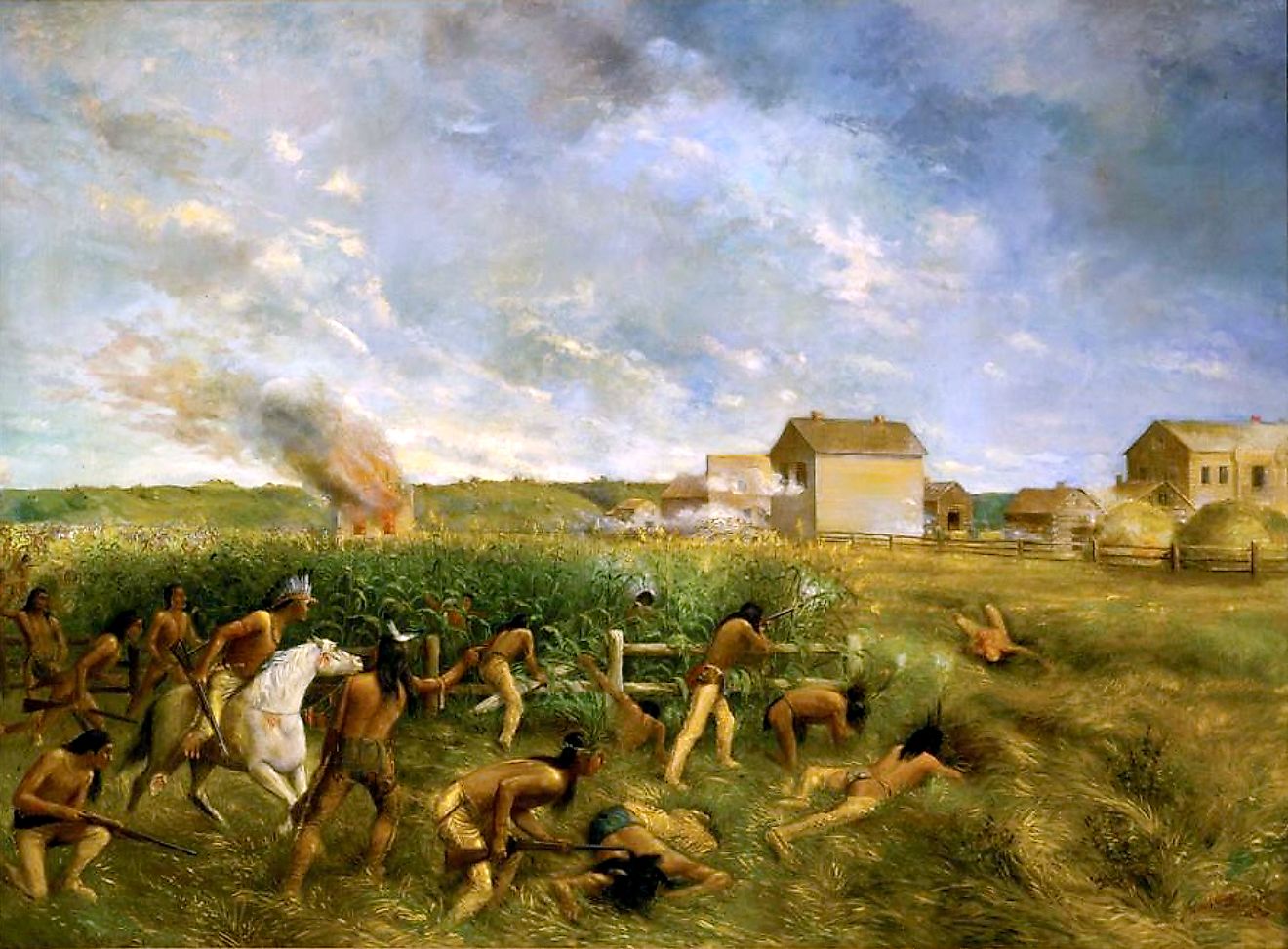
Ancient Weapons From Different Countries
There is little that captures the imagination more than the epic wars of the ancient world. Movies and television shows such as 300, Centurion, The Emperor's Shadow, and The Loves of Pharaoh romanticize historical events that in reality would have been brutal and bloody while equipping actors with weapons that are not culturally correct. From the use of a spiked ball and chain in Gladiator, the use of Greek weapons not yet invented in Troy, and even Disney’s Mulan which uses gunpowder-fueled canons before gunpowder was invented, there is seemingly an infinite supply of weapon inaccuracies in Western film and television. Here we consider weapons from ancient Meghalayan civilizations (that is civilizations that existed between 2,500 BCE and 0 CE), most of which have probably never been seen in any film, but are fascinating nonetheless.
Rope Dart, Tang Dynasty of Ancient China

The rope dart is a weapon quite well explained by its name, it being a small sharp dart attached to the end of a long rope that could be thrown at an enemy and then retracted. Though a simple concept, this weapon requires far more skill to use than throwing a simple dart, as the rope often unbalances the projectile. The rope dart was helpful in soldiers as it is a small and concealable weapon, especially under some manner of armor. The earliest written record of the use of this weapon dates back to the Tang Dynasty (618 to 907 CE) of Ancient China. However, some experts believe that this weapon was used long before this during the Western Han Dynasty (206 BCE to 24 CE). Considered a tertiary weapon, this means a type of weapon that would be used when a soldier had little other option. Today, the rope dart remains an essential weapon in Chinese martial arts, with some continuing to be trained in the use of this ancient weapon.
Khopesh, Ancient Egypt

Dating back to the Sumer civilization of Mesopotamia, from the third millennium BCE, the Egyptian khopesh is a single-handed sickle-shaped metal weapon. Although it looks closer to a sword, it is a descendant of the war ax. The khopesh was the weapon of the Egyptian foot soldier, ranging in length from 20 to 24 inches long. The shape of this weapon allowed soldiers to hook opponents’s weapons and/or shields and propel them away, leaving them vulnerable. While first made of bronze during the New Kingdom period (1,550 to 1,100 BCE), the khopesh weapon began later to be made from iron, a much stronger metal that is slightly lighter than bronze.
Xiphos, Ancient Greece

The xiphos sword is one of the oldest weapons of which there is archeological evidence. Developed by the Ancient Greeks after the Bronze Age, around 1200 BCE, this sword has varying formats across different civilizations. In Ancient Greece the term xiphos often referred to all swords highlighting the prevalence of this double-edged weapon. The Ancient Greek version of the xiphos had, on average, a 24-inch blade, while the Macedonian version had a blade closer to 18 inches. The blade of the xiphos has an elongated spade shape with the widest point of the blade being near the point. The xiphos is one of the more recognizable weapons used in film and television depicting ancient civilizations, although often wielded inaccurately.
Halberd (Ji), Zhou Dynasty of Ancient China

The Ancient Chinese ji weapon dates back to the Western Zhou dynasty of ancient China (1046 to 256 BCE). It is a weapon comprising of a long wooden pole with an attached ax or dagger ax with a reverse crescent blade and a sharp point at the weapon's farthest reaching point. It was used by infantry, cavalry, and charioteers in battle to great success. The alternative term for the ji weapon is halberd, a term used throughout history to describe varying weapons, including a Germanic weapon dating to the 13th century and a 15th-century Swiss weapon. The ji runs along the same structural vein as the European halberd, and so was re-named as a halberd for Western consumption.
Falx Sword, Dacia

Re-enactment of a Dacian soldier with a sica (falx, sickle) and shield.
The falx sword, with falx translating from Latin to mean sickle, is a weapon thought to have evolved from the North Thracian invention of the scythe. It was the quintessential weapon of a Dacian warrior, which was the ancient civilization that inhabited the European region once known as Transylvania, now a part of Romania. The falx sword is shaped like a ‘normal’ sword, except for the curvature nearing the pointed end of the blade. Proficient warriors were known to be able to decapitate opponents with one strike when wielding this weapon on horseback. The most common attack used with a falx was to swing from above so the curve would act like a pick as it struck one’s opponent. This sword was used by the Dacians until the Roman Empire invaded their territories in 101 CE, effectively ending their civilization, as the surviving Dacian people and society were absorbed into Roman culture.
Sarissa, Macedonian

The sarissa was first used during the height of the Macedonian Empire circa 300 BCE to 0 CE. It was used as the primary battle weapon of the Macedonian phalanx, the phalanx being a manner of attack formation used by the Macedonian infantry to great success in battle. The sarissa itself was a long double-pointed pike that was over four meters long. Each sarissa was made of two pieces which were only put together before battle, thus making them easier to maneuver when orienting the phalanx formation. When used, a sarissa was wielded with two hands and served as a single aspect of the collective phalanx. When a phalanx was set it effectively kept enemies at a distance while the entire phalanx was able to slowly push forward to gain territory. This weapon was recorded in the written record as having been used in many mythologized battles including the Battle of Pydna and the Battle of Cynoscephalae.
Chu-Ko-Nu, Han Dynasty of Ancient China

While scholars still debate the era during which the chu-ko-nu was invented, there is collective consensus that it was in use by the 4th century BCE in Ancient China. The chu-ko-nu is a repeating crossbow, meaning that it could shoot multiple bolts before needing to be reloaded. The exact number of bolts held before needing to be reloaded ranges between 10 to 15 bolts. Rather than being shot from the shoulder, as other crossbows of the time were, the chu-ko-nu was shot at hip height, which had some deleterious influence on the precision of shots. However, when the chu-ko-nu was used as a siege deterrent, only needing to hit a large target, the chu-ko-nu was the perfect weapon. A continued battery of bolts could be maintained with only a few crossbowmen as the rate of reloading was far less than a non-repeating crossbow.
Kopis Sword, Ancient Greece

Also known as a machaira, the kopis sword is an Ancient Greek weapon used by the Greek infantry and cavalry. It is a single-edged weapon meant to be used in a cut-and-thrust manner, with the blade itself having a slight curve, or recurve, in the middle of the blade. Particularly favored by the Greek cavalry when in battle against ground infantry, the kopis was an extremely difficult weapon to defend against when the strike came from above. The Kopis sword was wielded with one hand and on average was around 26 inches long. Today, you can see some beautifully preserved kopis swords at the Metropolitan Museum of Art in New York City, in Gallery 155.
Honorable Mention: Salting the Earth/Scorched Earth

In ancient times, particularly in the Mediterranean and Fertile Crescent regions, civilizations including the Scythians, Ancient Greeks, Ancient Romans, the Gauls, Ancient Egyptians, and Persians would, as the last step of conquering an enemy, destroy any chance for said society to rebuild. The collective idea of both salting the earth, literally referring to adding so much salt on fertile lands that they would be useless as agricultural lands for generations, and scorching the earth, this being the burning of agricultural and resource lands (forests), was to remove all resources needed for the conquered people to rebuild their society, as well as it being a preventative weapon, showing other would-be enemies the consequences of losing at war.
The Take Home
With so many fascinating ancient weapons it is hard to determine why exactly the film and television industry would rely on the same few, and often historically inaccurate, weapons whenever a battle or war scene is being depicted. While there are some examples of historically accurate weapons being used on screen, they are far between. This said, when weapons are used in film and television properly, and culturally appropriately, the finished product is always far superior to when weapon accuracy is not considered.











